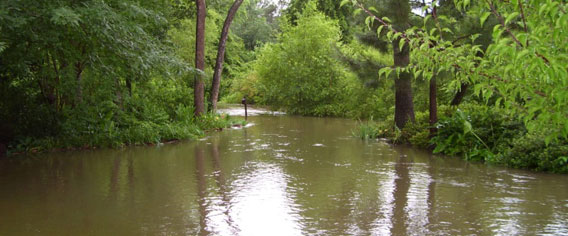North Carolina Construction News staff writer
The City of Fayetteville has completed nearly $28 million in stormwater infrastructure improvements since 2018 and several projects are continuing this summer.
Among the more than 29 completed projects are system upgrades to Spruce Street and the Natural Resources Conservation Service (NRCS) funded Flea Market stream bank stabilization, which were completed in April 2022.
Improvements at Spruce Street include a new culvert, manholes, concrete headwalls, concrete pipe and rip-rap lined channels. The changes should help alleviate flooding in the Greenwood Homes neighborhood.
The $488,597 in mitigation measures funded by the Stormwater Enterprise Fund took seven months to complete and removed an extended road crossing, improving the culverts level of service to its current standards. Two prior phases of work at Spruce Street provided culvert improvements under Forest Hills Drive, Stamper Road and Acorn Street.
The stabilized stream bank, behind the Flea Market off Bragg Boulevard, is upstream of Evans Lake. The $438,683 project completed in just seven months included debris removal, pipe and headwall replacements, and bank stabilization utilizing gabion baskets. Funded through a United States Department of Agriculture Natural Resources Conservation Service grant for the emergency watershed protection, these improvements reduced the amount of debris in the stream and stabilized the banks of the channel limiting erosion and sediment deposits. The upgraded infrastructure also improves water flow to offer relief to residents and business owners in this area during storm events.
“Please remember these are mitigation efforts and forces of nature are unpredictable,” said Assistant Public Services Director Byron Reeves. “Responding to identified needs in the Watershed master plan, we proactively search for grants to help with solutions but risks will always exist if a home or business is in a flood-prone area.”
City leaders and staff continue to make infrastructure improvement a priority but in most residential areas systems are designed for what’s commonly referred to as a 10-year, 24-hour storm event. A 10-year event is a storm capable of producing rainfall expected to be equaled or exceeded on the average of once in 10 years.

